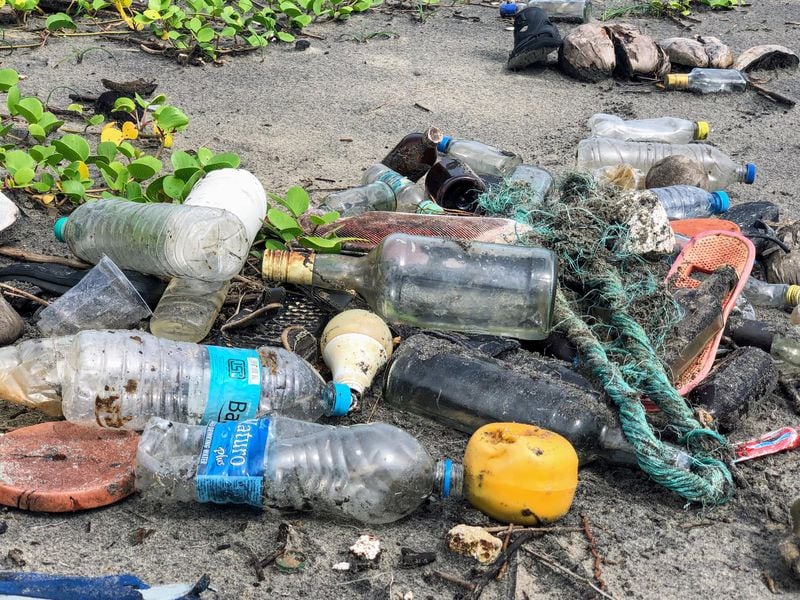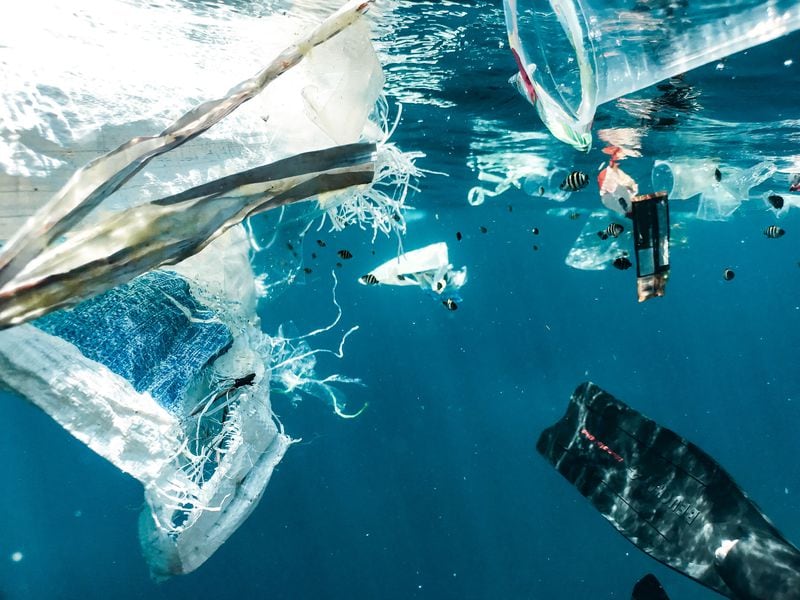According to the UN, 90% of the plastics we use end up in landfills. However, it is possible to find them in rivers and beaches. If the trend continues, it is expected that by 2050 there will be more plastic than fish in the sea. Here are some recommendations to understand its impact and reduce its use.
In Chile, according to data from the Ministry of the Environment (MMA), About one million tons of plastic are consumed per year, of which only 8.5% is recycled in the country . Contamination by this product is one of the biggest threats on the planet, so Reducing the plastic footprint is a global challenge .
The plastic footprint or plastic footprint refers to the amount a person uses or emits in product forms containing this material and its associated environmental effects or impacts after being consumed and discarded by the population.
The UN reports that, worldwide, 90% of used plastic waste ends up in landfill . However, now we can find it in air and water.
In Chile It is estimated that 75% of the litter found on the beaches corresponds to this material most often small and used only once.
The problem is that plastic can take up to 400 years to decompose. Therefore, waste can alter habitats and natural processes, affecting people. That is why, in recent years and within the framework of a State policy, different laws have been created in order to reduce the amount of this material on the national territory.

Laws on the use of plastic in Chile
- Say goodbye to plastic bags
In 2018, the law which prohibits the delivery of commercial plastic bags throughout the territory was put in place , with the aim of protecting the environment and reducing contamination of this material. For this, it establishes penalties for people and places that do not comply with the regulations.
In 2019, Supermarkets and retailers were banned from delivering bags containing this material while small and medium-sized businesses have started applying the standard since 2020. Premises that do not comply with the Law 21 100 they can be fined 5 UTM for each bag delivered .
In addition, the regulations stipulate that the MMA should promote and implement environmental education programs for the population on the use of plastic bags and its impact on the ecosystem, including its reuse and recycling.
- Single-use plastic law
In February 2022 The Single-Use Plastics Act has come into force which aims to protect the environment and reduce the production of waste in the country.
There Law 21,368 aims to limit the delivery of single-use products in food stores encourage the reuse, certification of this material and the regulation of disposable plastic bottles. According to MMA data, more than 23,000 tons of these elements are generated in a year. .
Through a press release, Cristian Bustos, environmental expert and founder of Scale Up Beeok, underlines: “Every time we buy products with plastic or single-use packaging, our actions have an impact on the amount of plastic that pollutes different ecosystems, such as oceans, rivers, forests and cities.The plastic footprint is a general measure of these activities.
This regulation prohibits the delivery of plumavit, bombillas, stirrers, cutlery and disposable chopsticks at catering outlets. In addition, it obliges supermarkets to offer and receive returnable bottles, whether in their face-to-face or online sales.
During this year, new regulations have also come out, and from the years 2024 and 2025, the latest regulations of the law will begin to apply.
Bustos says if the problem with this material continues as a trend, by 2050 it will have caused more than 56 gigatonnes of carbon dioxide emissions. Also, for that year and to continue with the pace of consumption, there will be more plastic than fish in the sea .

Recommendations to reduce the plastic footprint
busts provides a series of tips to reduce or avoid plastic pollution by people:
- Use reusable bags : Around 1 million plastic bags are used every minute, while a single plastic bag can take around 1,000 years to degrade, so opt for cotton bags instead. Keep in mind that nylon or polyester bags are made from this material.
- Buy boxes, not bottles : Buy detergent and dish soap in boxes instead of plastic bottles. Cardboard can be easily recycled and become more products than other materials.
- Buy food in bulk : Some stores sell bulk foods such as rice, pasta, nuts, cereals, etc. If you choose to stuff these items into reusable bags or containers, you’ll save money and unnecessary plastic.
- Reuse glass containers : It is possible to purchase a number of foods that come in glass jars instead of plastic containers, such as spaghetti sauces, gravy, and applesauce to name a few. Instead of throwing away or recycling these containers, use them to store food or take them with you when bulk shopping.
- Use reusable bottles and cups : Bottled water produces 1.5 million tons of plastic waste per year and, according to Food & Water Watch, around 180 million liters of oil are needed to produce it. By refilling them, you can prevent lots of plastic bottles from ending up in our oceans and landfills, but that’s not all; bring a reusable cup to cafeterias and ask the server to refill it for you, have one on your desk instead of one of these.
- Do not use plastic utensils : If you often forget to bring cutlery to your meal or if you know that your favorite restaurant only has plastic, start carrying your set of utensils. You are sure to reduce your carbon footprint.
- Don’t buy packaged juices : instead of buying juice in plastic bottles, make your own freshly squeezed juice or just drink water or eat fresh fruit. This will not only reduce the consumption of this material, but it will also be better for your health.
Source: Latercera
I am David Jack and I have been working in the news industry for over 10 years. As an experienced journalist, I specialize in covering sports news with a focus on golf. My articles have been published by some of the most respected publications in the world including The New York Times and Sports Illustrated.


